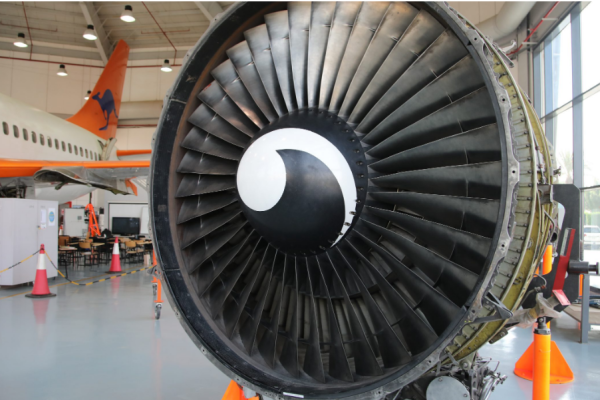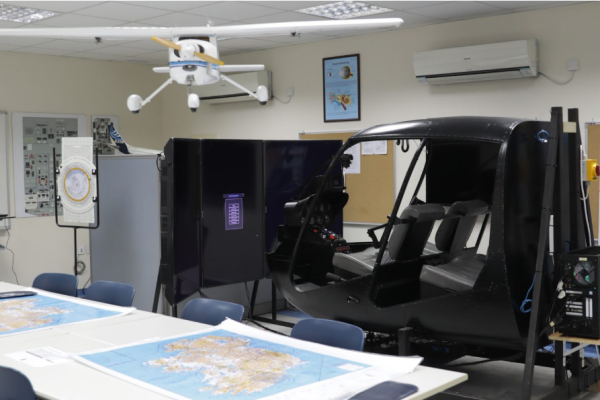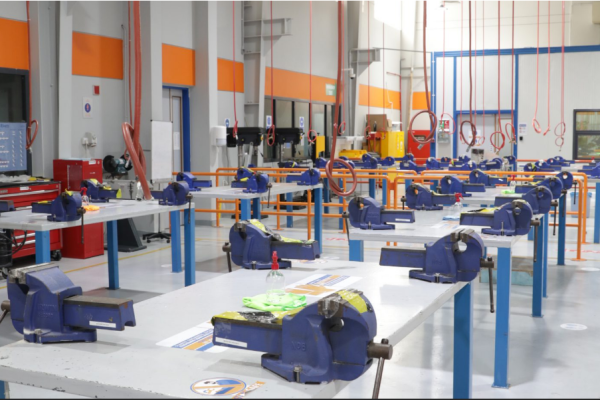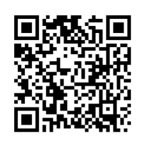School of Aviation
As a major sector in industry, the aviation sector contributes to advancing development stimulating the economic cycle, and supporting the development of several areas in countries, particularly in terms of encouraging investment and promoting trade, culture, and tourism.
The aviation sector seeks to increase the percentage annually based on an action plan and strategy to acquire a larger share in domestic and neighboring markets. Such strategic direction is dependent on achieving operational excellence in aviation through adopting measures such as improving its fleet network as well as increasing the efficiency of service provided, which turn will enhance competitiveness and operational performance.
This aspired strategy is challenging to achieve unless a qualified young aviation cadre is availed, such cadre needs to highly trained and equipped with the latest scientific and practical theories and practices in the aviation industry.
The School of Aviation at the Australian University runs accredited Diploma in Aircraft Maintenance Engineering (Mechanical) B1.1 and (Avionics) B2.
The Australian University has expanded its programs in aviation and introduces new diploma programs and bachelor’s programs.

- Building 6
- 1828225 Ext. 4286/4132
- aviation@au.edu.kw
- 8:00 a.m. to 3:30 p.m. Sunday to Thursday
AU has obtained four international accreditations from:
Thus, approvals placing credibility to its awarded programs and facility.
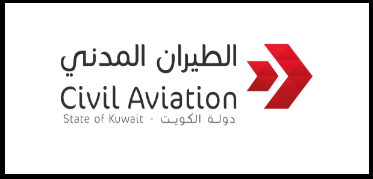
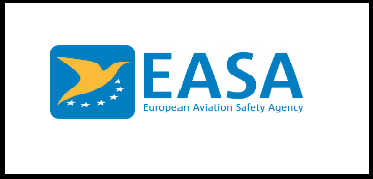
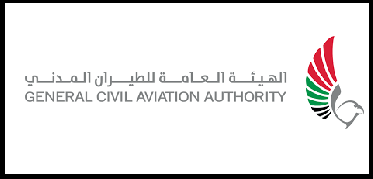

State of the art aircraft maintenance training facilities, classrooms, training aids and a live Boeing 737-200 Aircraft, allow for a thorough understanding of the aerospace maintenance industry requirements and practices.
AU has invested a lot of time, money and resources; into making its Aviation programs complemented with a complete learning environment, for both classroom and practical skills based training and our facilities are as follows:
- Complete Learning Environment.
- Integral training hangar.
- Boeing 737-200 Aircraft.
- Variety of training aids for on-aircraft practical training.
- Hydraulic, fuel systems and pneumatic practical workbenches.
- Avionics laboratory.
- Mechanical and sheet metal workshop.
- Ten separate theory classrooms, all with the latest smart projection systems.
- Computer Lab – Computer Based Training Examination Room (EASA Part-66 approved examination venue).
- Auto-Pilot Simulator Board.
- Flight Simulator Room.
- Aircraft Traffic Control Room.
Many of our students are trained for weeks. Therefore; we do our best to make their stay with us as comfortable as possible.
We believe that we are more than just a training organization and would like to help you in making your dream come true.
E-Registration for website:
You can register now for Part 66 | CAR 66 Basic License Examination online, please click the link below:
https://examzone.au.edu.kw/AVPARTCAR66/PUBLIC/
External can register as guest (non-AU candidate form) to receive their new IDs
Graduates are required to fill the (AU graduate form)
Candidates can register and pay online.
AU – Aviation students can login directly to the website using their given ID and password (same as EduLearn).
NOTE: It is mandatory to register online as the candidate will receive their grades and emails from examzone.au.edu.kw.
You can also scan QR code:
The Australian University operates as a test centre for Mayflower College in the UK which is approved to conduct English Language Proficiency testing by the UK CAA and the Kuwait DGCA for Pilots and Air Traffic Controllers:
- For UK-CAA-Licensed candidates, the fee is GBP 190 per candidate.
- For other candidates, the fee is GBP 170 per candidate.
- For additional DGCA Licensed candidates, the total fee is KWD 87 per candidate.
Fees are to be paid in Kuwaiti Dinars at the prevailing exchange rate.

Aviation Programs
The Diploma of Aircraft Maintenance Engineering (Mechanical) B1.1 consists of the following:
- Theoretical study (1,414 hours) at AU.
- Part/CAR 147 Practical Training (700 hours) at AU
- Part/CAR 145 Practical Training (300 hours) at Kuwait Airways
- 29 Formative Exams
- Required minimum attendance 80% for each unit.
- Required 75% pass mark.
- 13 DGCA/EASA/GCAA Part/CAR 66 module examinations:
- Required attendance of 90% per module.
- Required 75% pass mark.
- Student requires a minimum successful completion of at least 3 module exams of the 13 module examinations to get the AU Diploma in B1.1.
The Diploma of Aircraft Maintenance Engineering (Avionics) B2 consists of the following:
- Theoretical study consists of (1500 hours) at AU.
- Part/CAR 147 Practical Training (700 hours) at AU.
- Part/CAR145 Practical Training (300 hours) at Kuwait Airways.
- 29 Formative Exams.
- Required minimum attendance 80% for each unit.
- Required 75% pass mark.
- 12 DGCA/EASA/GCAA Part/CAR 66 module examinations.
- Required minimum attendance 90% per single module.
- Required 75% pass mark.
- Student requires a minimum successful completion of at least 3 module exams of the 12 module examinations to get the AU Diploma in B2.
- Student requires a minimum successful completion of at least 3 module exams of the 12 module examinations to get the AU Diploma in B2.
Program Introduction
This program is designed for students who plan to gain employment in the Air Traffic Control industry. The School of Aviation at the Australian University will offer the proposed program.
The organization of aircraft movement during take-off, landing, movement, and emergency management is known as air navigation control. Real-life scenarios, like as weather variations and aircraft kinds, are entirely made up and simulated.
The air controller is the backbone of the air navigation system and is in charge of everything from engine management to engine shutdown. Pilots follow the orders of an air controller, who works with planes using established regulations, procedures, rules, and applications.
An air traffic controller is a person who screens, endlessly controls the development of on the ground airplanes and in provincial airspace. They pass data on atmospheric conditions, heights, and bearings, help and guide pilots on landing and take-off, oversee subordinates and foster their abilities.
This program enables students to acquire a Diploma of Air Traffic Control within two years, the program consists of 20 courses totalling 60 Credit Hours (3 credit hours per course). The 60 Credit Hours are distributed throughout four academic semesters.
Program Objectives
This is a specialist qualification for Air Traffic Controllers. Graduates at this level will have technical and theoretical knowledge in aviation and air traffic control (ATC).
Graduates at this level will also have a broad range of cognitive, technical, and communication skills to select and apply methods and technologies to:
- Analyse information to complete a range of activities
- Provide and transmit solutions to sometimes complex problems
- Transmit information and skills to others
- Support others to develop aviation and ATC skills.
- Graduates at this level will apply knowledge and skills to demonstrate autonomy, judgment, and defined responsibility in known or changing contexts and within broad but established parameters.
Learning Outcomes
Upon completion of the Diploma of Air Traffic Control, the students will be able to:
- Integrate and apply the appropriate level of English language, technical knowledge, and practical skills into realistic Air Traffic scenarios while disseminating Flight/MET information in a correct and timely manner for the safe and efficient conduct of flights in a simulated environment.
- Identify and evaluate the regulatory framework and the interpersonal factors underpinning the provision and practices of Air Traffic Control.
- Demonstrate a comprehensive understanding of Air Traffic Services in general and develop specific theoretical and practical skills and techniques to identify, manage and operate all relevant ATS equipment effectively.
- Demonstrate situational awareness together with the ability to integrate and apply knowledge and practical skills into realistic Air Traffic scenarios via the use of a simulated Aerodrome environment.
- Disseminate Flight/MET information in a correct and timely manner for the safe and efficient conduct of flights in a simulated environment.
- Critically analyse traffic situations for potential conflict and apply timely and justifiable resolutions using appropriate separation standards in a simulated environment considering aircraft, terrain, airspace, and weather.
Career Pathway
Air Traffic Controller
Program Introduction
This diploma is designed for students who plan to undertake a professional capacity in the field of Logistics. The proposed program will be offered by the School of Aviation at the Australian University.
Aviation logistics can be defined as a set of public services provided by management in the most efficient manner possible to ensure that operations and activities run smoothly. In the air cargo supply chain, logistics technology includes aviation in the planning, organization, administrative control, and enforcement activities.
Logistics specialists in the aviation industry are in charge of directing the distribution of airport materials, supplies, and finished goods. They devise techniques to lower the cost and duration of goods transportation. They compile statistics on aviation performance and make recommendations for improvements in aviation, airport management, and customer service.
This program enables students to acquire a Diploma of Logistics within two years, the program consists of 20 courses totaling 60 Credit Hours (3 credit hours per course). The 60 Credit Hours are distributed throughout four academic semesters.
Program Objectives
This is a specialist qualification for Logistics. Graduates at this level will have technical and theoretical knowledge in aviation and Logistics.
- Demonstrate knowledge of the principles and practices of logistics.
- Apply logistics principles and practices to real-world problems.
- Communicate effectively with others, both verbally and in writing.
- Work effectively in teams.
- Utilise the available technology to solve logistics problems.
- Graduates at this level will be able to use their knowledge and skills to make decisions, solve problems, and work independently in a variety of settings.
Learning Outcomes
Upon completion of the Diploma of Logistics, the students will be able to:
- Graduates will have demonstrated the capacity to accurately explain the impact of logistics on the environment, society, and the wider economy.
- Graduates will have demonstrated an ability to engage with supply chain drivers and the metrics used in evaluating them to formulate a framework for a viable and sustainable supply chain.
- Graduates will have demonstrated an ability to work and communicate effectively in multi-disciplinary and multi-cultural teams in diverse fields of practice.
- Graduates will have the cognitive and technical skills to make an immediate and effective contribution to a logistics-related role.
- Graduates will have the ability to engage in lifelong learning and contribute to the development of professionalism within the logistics and transport industry.
- Graduates will have demonstrated the ability to apply acquired logistics and transport knowledge and skills for national development.
- Graduates will have demonstrated knowledge of the logistics relating to the aviation industry.
Career Pathway
- Logistics Officer / Manager
- Purchasing Officer / Manager
- Warehouse Officer/ Manager
- Quality Control
- Transportation Planner
- Inventory Officer/ Manager
Program Introduction
The proposed program will be offered by the School of Aviation at the Australian University. This program enables students to acquire a Bachelor of Aircraft Maintenance Engineering within two years after the completion of the diploma program that is currently offered by the AU School of Aviation and approved by the Private Universities Council. The program consists of 20 courses totaling 60 Credit Hours (3 credit hours per course). The 60 Credit Hours are distributed throughout four academic semesters.
Program Objectives
The Bachelor of Aircraft Maintenance Engineering program graduates can:
- Secure successful careers in the field of Aircraft Maintenance Engineering.
- Know the principles of quality management and peculiarities of their implementation.
- Communicate effectively individually or in diverse groups to address and solve maintenance engineering problems.
- Demonstrate principles of soft and technical skills.
- Write a technical report.
- Competently pursue higher education or entrepreneurship.
- Manage the development and improvement of services.
Learning Outcomes
Upon completion of the Bachelor of Aircraft Maintenance Engineering Program, the students will be able to:
- Describe the regulatory standards for aircraft maintenance and airworthiness.
- Demonstrate through individual written communications, a clear and coherent body of knowledge and understanding of maintenance concepts and practices.
- Be an effective decision maker with strong communication and teamwork skills and an understanding of the global, ethical and social implications of the aviation industry and engineering profession.
- Demonstrate knowledge of the management principles.
- Provide leadership in applying relevant standards and codes of practice with an emphasis on health and safety aspects in the workplace.
- Acknowledge the impact of aircraft maintenance engineering expertise in global, economic, environmental and societal contexts.
- Apply relevant communication techniques in various aviation environments and conduct proper technical literature review.
- Function effectively as individual and lead in a multidisciplinary diverse team within aviation industries
Career Pathway
- Aviation Maintenance Management
- Safety and Compliance Manager
- Technical Sales Representative/ Manager
- Aircraft Technical Representative/ Manager
- Maintenance Planning and Control
- Quality Control Inspector
Program Introduction
This program been developed and designed for students who plan to gain employment in the Airport and Airline industry. The program will be offered by the School of Aviation at the Australian University.
As aircraft industry techniques evolve, airport configurations and expansions evolve too, increasing the need for aviation and airport operations specialists with knowledge and skills in civil aviation, information technology, aircraft, the general economy, international aviation, logistics, airline security, passenger services, and international transport.
Aviation and Airport Operation specialization is one of the emerging disciplines as a result of the world’s significant development in travel, air transport, and airports.
The purpose of the aviation and airport operations discipline is to produce graduates who are well-versed in airport management and who possess the essential foundations and skills not only to construct, operate, and manage airports, but also to address problems and challenges.
Graduates in aviation and airport operations are well-versed in administrative and commercial skills, as well as a thorough understanding of the ground infrastructure required for safe and comfortable air travel.
This program enables students to acquire a Bachelor of Aviation and Airport Operations within four years. The program consists of 40 courses totalling 120 Credit Hours (3 credit hours per course). The 120 Credit Hours are distributed throughout eight academic semesters. The Bachelor of Aviation and Airport Operation Program spans university, School, and College requirements, as mandatory and elective courses.
Program Objectives
The Bachelor of Aviation and Airport Operation program graduates can:
- Develop a strong foundation in aviation knowledge, including its history, regulations, economic factors, and technological advancements.
- Acquire specialised knowledge and skills in airport operations management, including terminal operations, baggage handling, passenger services, ground handling, safety and security, infrastructure management, and emergency response planning.
- Gain a thorough understanding of air traffic services, including air traffic control operations, airspace management, communication procedures, navigation systems, and separation techniques.
- Cultivate essential business and management skills necessary for leadership roles in the aviation industry.
- Engage in practical training and internships within airports, airlines, or aviation organisations to apply theoretical knowledge in real-world settings, develop practical skills, and build industry networks for future career opportunities.
Learning Outcomes
Upon completion of the Bachelor of Aviation and Airport Operation Program, the students will be able to:
- An ability to design, improve, innovate, and supervise systems or processes to meet desired needs within realistic constraints.
- An understanding of the effects and impact of the aviation profession on the environment and society, as well as the social and ethical responsibilities of the profession.
- An ability to work effectively in multi-disciplinary and multi-cultural teams in diverse fields of practice.
- Demonstrate knowledge and understanding of a wide range of theories and conceptual frameworks from closely related disciples as well as the more specialised areas of aviation and airport management, and their application, interrelationships, and integration to successfully articulate, plan and manage aviation operations.
- An ability to engage in life-long learning and to keep current with the development in the specific field of specialisation.
- Successfully challenge, apply, and modify a wide range of conceptual and regulatory frameworks underpinning the aviation industry and how these uphold safety, efficiency, security, corporate responsibility, and environmental protection.
Career Pathway
- Airline Operations Management
- Airport Operation Manager
- Passenger Transport Manager
- Airline Sales Management
- Airline Operator
AU welcomes individual students as well as large client bookings from the Aviation Industry. External students or professionals can tailor modules to suit their exact requirements and can attend as many or as few modules (theory, examination or both) as they require or to attain any of the following certificates:
- Theoretical study consists of (1400 hours) at AU.
- Part/CAR147 Practical Training (700 hours) at AU.
- Part/145 Practical Training (300 hours) at Kuwait Airways.
- 13 DGCA/EASA/GCAA Part/CAR 66 module examinations.
- Required minimum attendance 90% per module.
- Required 75% pass mark.
- Theoretical study consists of (1500 hours) at AU.
- Part/CAR147 Practical Training (700 hours) at AU.
- Part/CAR145 Practical Training (300 hours) at Kuwait Airways.
- 12 DGCA/EASA/GCAA Part/CAR66 modules’ examinations.
- Required minimum attendance 90% per module.
- Required 75% pass mark.
The School of Aviation successfully introduced the B1.1+B2 combined course providing its B1.1 graduates with an additional progressive path which also allows them to pursue their education and earn recognition locally, regionally and internationally.
The combined B1.1+B2 course is a combination of the B1.1 and B2 courses that allows the students to graduate with a Certificate of Recognition in Basic Training B1.1+B2 combined. Upon completion of the required work experience, students may apply for B1.1 and B2 AME licenses.
This combined course will grant AUs’ students an advantage and priority in the job market. For more information about B1.1+B2 Combined Course fees, please access the Fees and Student Finances page.

